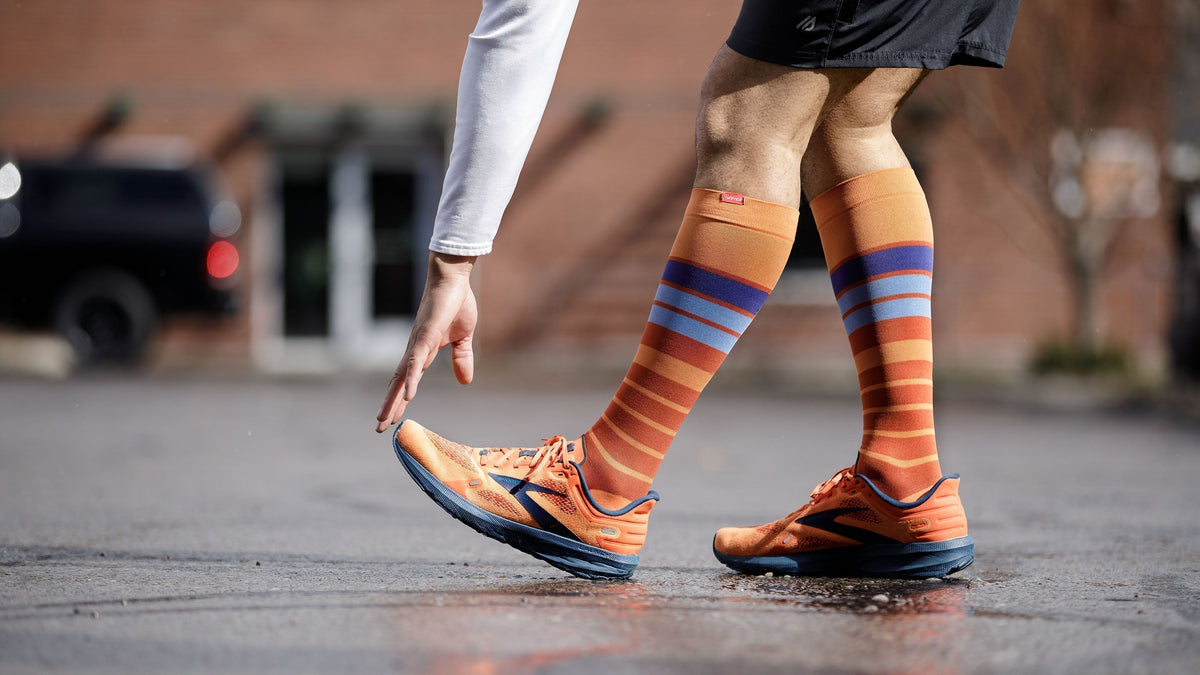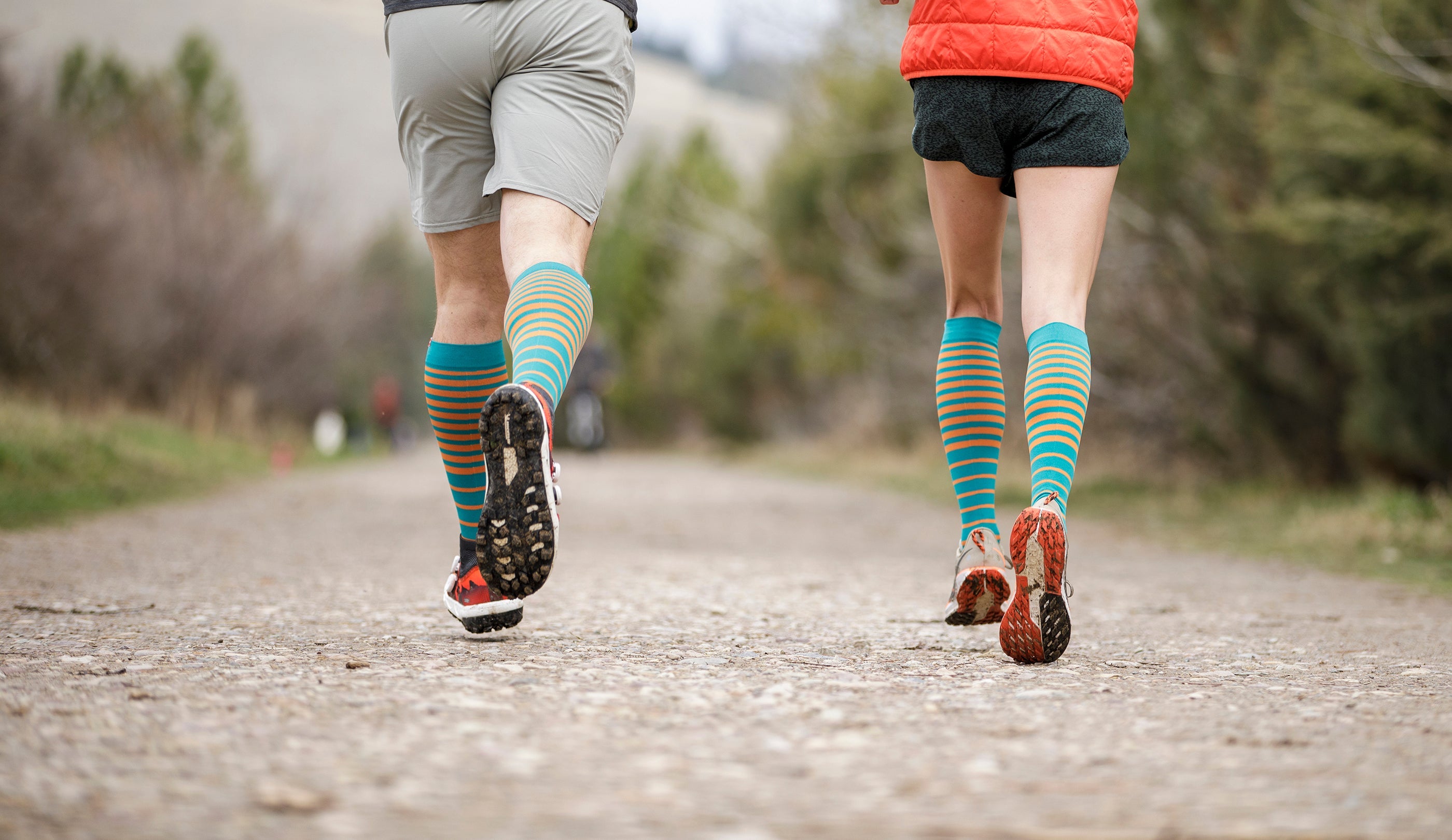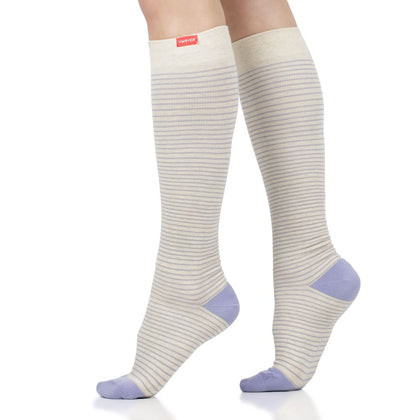

Feeling mild pain or soreness when running does not always signal that you have an injury. You could be experiencing fatigue or simply sore muscles. This is especially common if you had a big gym session the day before or are doing a recovery run the day after an intense session. However, it is important for you to differentiate between “good” and “bad” pain and know how to avoid injuries as runners.
In this article, we will look at why you might have calf and shin pain while running and address how you can prevent the “bad” aches and sharp calf pain while running. Read on for top tips and remember to always listen to your body and always check with a doctor if you are uncertain about your shin or calf pain.
Common Causes of Calf and Shin Pain While Running
Aside from minor aches when pushing yourself for a new personal distance record or muscle soreness from the day before, pain when running is generally a sign of injury. If you experience sudden pain in your calf muscles or shins when running, you need to stop and assess the causes. Here are common causes of calf and shin pain while running.
Muscle Strain and Overuse
Muscle injury is one of the most common causes of pain while running, according to a scientific review. That article states that the most common calf injury is a tear of the medial gastrocnemius muscle. But why do these muscle injuries to the calf happen?
You might be pushing the muscles too hard, either with the volume of running or with the intensity of your exercising. This is called overtraining. A scientific article published in 2023 stated that shin pain is commonly caused by overuse without adequate recovery, overly tight or weak triceps surae muscles, and poor footwear. If you subject your body to too much strain too soon, you risk overloading the muscles, which can lead to strains. The extreme outcome can be a pulled or torn muscle in your calf or shin, which will require you to take time off from running.
Shin Splints
If the front of your lower leg is hurting while running, that is usually caused by shin splints - the colloquial term for medial tibial stress syndrome. The clue is in the name; you are putting too much stress on your lower legs either from too much running or from the conditions you’re running under. For example, the Mayo Clinic reports that excess running on concrete increases the risk of shin splints because of the repetitive impact of landing on hard surfaces and the micro vibrations that travel up through the legs when running.
Compartment Syndrome
According to the Cleveland Clinic, compartment syndrome refers to cases when there is a buildup of pressure around the muscles to a level that restricts blood flow, and with it the delivery of oxygen and nutrients to the muscles. It can be extremely painful, and it often happens to the lower leg muscles - so the shins and calves are particularly vulnerable.
There are two types of compartment syndrome that may cause shin or calf pain. Acute compartment syndrome is a medical emergency that often occurs after a severe injury. Seek a medical professional right away. If left untreated, you may experience permanent damage to your muscle, and it can be life-threatening. Chronic compartment syndrome, on the other hand, builds up gradually after many bouts of intense exercise. While chronic compartment syndrome is not an emergency, it can still be very painful. Compartment syndrome is more common in people who have had bone fractures. In fact, again according to the Cleveland Clinic, about10% of people who have had a broken tibia end up with this type of condition.
Chronic compartment syndrome is common in runners who overwork their muscles. Be sure to listen to your body and rest if you feel pain in your shin or calf after running. Additionally, if you have a blood disorder, you are at a higher risk of developing compartment syndrome.
Stress Fractures
When the bones are subjected to repetitive impact, often from overuse during exercise, they can develop small cracks which are called stress fractures. A stress fracture occurs when your bones can no longer withstand the repetitive impacts, according to a scientific review. They are most commonly encountered in the small bones of the legs and feet, so you could experience shin pain while running from a stress fracture. You could also develop stress fractures from weakened bones, which can occur due to osteopenia or osteoporosis according to one report. The researchers of that study also found that running at a slower pace (>11 minutes per mile vs. <10 minutes per mile) reduces the risk of a stress fracture.
Achilles Tendonitis
Another common pain felt in the calf while running is Achilles tendinitis. Achilles tendonitis is a strain to the tendon that connects your calf muscles to the heel. This tendon is found almost in line with the soleus muscle and underneath your gastrocnemius muscle (the two parts of the calf). According to the Mayo Clinic, Achilles tendinitis is often caused by muscle overuse, increasing running intensity or duration too quickly, or by straining the area during running or playing sports, particularly when you haven’t warmed up enough beforehand.

How to Prevent Shin and Calf Pain While Running
Although running is a sport that requires repetitive impact, which can raise your risk of injuries, following a few simple tips will help you stay healthy and reduce your risk of shin or calf pain while running so you can continue to do what you love.
Wear Calf Compression Sleeves
While protecting your calf muscles, especially your Achilles tendon, from the repetitive strain of landing on hard surfaces, compression sleeves also increase localized blood flow. Calf sleeves are great for supporting the muscles when you return from an injury, by giving you a little extra stability.
One study found that compression of the lower leg after exercise may improve recovery. This means that you could recover more quickly and reduce the chance of shin splints or other pain that might occur when running.
Warm Up and Cool Down Properly
Common running injuries to the shins or calf muscles are often caused by inadequate warm-ups and cool-downs (or not doing them at all!). Dynamic stretches, performed after a few minutes of gentle jogging, will warm up your muscles and tendons and better prepare them for more intense running.
Cool-downs are also important to bring your heart rate down gradually after a hard session. Simply slow down your pace or even walk for the last 2-3 minutes of your running session. Then, spend 10-20 minutes stretching all the major muscle groups, like your calves, hamstrings, quadriceps, and hips. If you feel too stiff or sore after a long run, rest for a little while and go back to stretching later in the day (but don’t skip it completely). You can also do some stretches that target the Achilles tendon, like these.
Gradually Increase Running Frequency
The cause of many strains and sprains is running too frequently too soon, according to one scientific article. This can be either going for a very long run after no or very little training (don’t sign up to run a marathon and just show up!) or doing a very intense workout without having built up to it in training. Ideally, you should follow a training plan based on gradual progression, where every week you build on the previous week’s workouts. This means, for example, going from doing 1-minute speed intervals 5 times per workout, to 3-minute intervals. It also means increasing your longest run by about 10% every week.
Another important element of your running training plan is rest and recovery, this includes rest weeks. Usually, training programs have two or three weeks of “building up” where you increase volume and intensity gradually, then one recovery week where you take it a little easier. As this article explains, making sure you take recovery periods reduces the stress buildup within your body. It also allows your muscles and your cardiovascular system to heal and prepare for the next exercise sessions. Don’t skip recovery periods!

Incorporate Strength and Flexibility Training
We’ve already mentioned the importance of stretching, after your runs or at a separate point throughout the day. Runners should also do some strength exercises at least once a week to build strength and prevent injury. As this article from Harvard Medical School outlines, strength training benefits not just the muscles, but also bone strength and density.
Add classic exercises for the whole body into your routine. These can include:
- Squats (body weight at first, then weighted, increasing gradually)
- Lunges (forward and back)
- Chest press
- Overhead shoulder press
- Calf raises
- Bent-over or seated rows
- Deadlifts
- Core strengthening exercises such as regular and lateral plans, leg raises, etc.
Stronger muscles also help improve your running form, which will help prevent injuries to the lower legs, especially the calves and shins.
Finally, do this simple band exercise to strengthen the muscles that help you balance as you run and to decrease the risk of shin splints. Here is an example of one band exercise:
- Attach a short elastic band to a pole or squat rack in the gym, or the leg of a heavy piece of furniture at home, then sit in front of it with your legs straight and pass your foot through it
- Position yourself so that the band is around the section of your foot just above your toes, and there is a little tension in the band when your foot is at 90 degrees with the floor
- While keeping your ankle in the same spot, try to raise your foot - you will feel the tension up the shin
- Repeat 8-12 times, for 3 sets.
Maintain Proper Running Form
While “proper” running form may vary by individual and by the speed or intensity of your running, it can help you avoid injuries. Generally, everyone can benefit from lifting their head and looking straight ahead, rather than running hunched over. Roll your shoulders back to release tension in your chest. This can also help you avoid the dreaded side stitch.
Then, focus on landing with your feet in a smooth fashion, don’t overstride or land hard without control This reduces some impact from landing, helping decrease the risk of shin pain. Imagine you’re leading with your hips, not your heels. You can find more tips and different considerations about running form here.
Select the Right Running Shoes
Finally, your shins will particularly suffer from inappropriate running shoes, according to one scientific article. Beginners especially need to look for cushioned shoes to allow their body to adapt to the repetitive stress of running, especially if you often run on the roads. Speak to your local running store assistant to try out different types of shoes so you can get a feel for different levels of cushioning and sizes of toe boxes. Think about how tight the shoes feel when trying them on, since your feet swell during running and may need slightly more room to avoid blisters and rubbing.

Treatment Options for Sudden, Sharp Calf Pain While Running
While the advice above should help you avoid injuries like calf strains or shin splints, the fact is that sudden, sharp pain to your shins or calves can still happen. Sometimes, it can be caused by as little as stepping the wrong way and pulling your calf muscle. So, here’s what to do in those cases, depending on the severity of your injury.
Rest and Recovery
Your first choice should be to rest to allow your body to recover. If you’ve just lightly strained your calf muscles, then taking a few days off from running, while applying ice to the area and elevating the legs, will improve your chances of recovery.
Ice and Elevation
A classic for a reason, ice and elevation contribute to bringing down inflammation in the injured area. Ice may also reduce the pain of a strained muscle or a sore shin, letting your rest more comfortably.
Compression Therapy
Wearing graduated compression garments like socks is a simple way to boost your recovery after exercise, according to one scientific article. Compression socks boost blood flow from the legs towards the heart to help reduce swelling. It also improves blood flow to the lower legs to improve delivery of oxygen and nutrients to the muscles. Moreover, compression therapy helps reduce inflammation to improve your comfort while you recover.
Stretching and Foam Rolling
Using a foam roller can help reduce tension in sore or strained muscles by releasing knots. But be gentle with how you use it so you’re not causing more damage. Light stretching is also beneficial, but you should check with your doctor before doing any movements if you’ve felt sudden bursts of pain, as you could do more harm.
Talk to Your Doctor
It’s always wise to consult with your doctor if you feel sudden or sharp pain in your calves or shins while running. Sometimes, underlying problems like stress fractures go unnoticed for too long because athletes don’t check with a medical professional and continue running, and that can lead to worsening of the situation. If you have any doubt about a potential shin or calf injury, speak to a medical practitioner before returning to exercise.
References
Fields, K. B., & Rigby, M. D. (2016). Muscular Calf Injuries in Runners. Current sports medicine reports, 15(5), 320–324. Read it here.
Bhusari, N., & Deshmukh, M. (2023). Shin Splint: A Review. Cureus, 15(1), e33905. Read it here.
McClure C.J., & Oh R. (Updated 2023 Aug 8). Medial Tibial Stress Syndrome. In: StatPearls [Internet]. Treasure Island (FL): StatPearls Publishing; 2024 Jan-. Read it here.
Mayo Clinic Staff. (2021, October 16). Shin splints - Symptoms and causes. Mayo Clinic. Read it here.
Cleveland Clinic. (2021, February 15). Compartment Syndrome: Symptoms, Causes, Treatments & Recovery. Cleveland Clinic. Read it here.
Warden, S. J., Burr, D. B., & Brukner, P. D. (2006). Stress fractures: pathophysiology, epidemiology, and risk factors. Current osteoporosis reports, 4(3), 103–109. Read it here.
O'Riordan, S. F., Bishop, D. J., Halson, S. L., & Broatch, J. R. (2022). Compression-induced improvements in post-exercise recovery are associated with enhanced blood flow, and are not due to the placebo effect. Scientific reports, 12(1), 16762. Read it here.
van der Worp, M. P., ten Haaf, D. S., van Cingel, R., de Wijer, A., Nijhuis-van der Sanden, M. W., & Staal, J. B. (2015). Injuries in runners; a systematic review on risk factors and sex differences. PloS one, 10(2), e0114937. Read it here.











